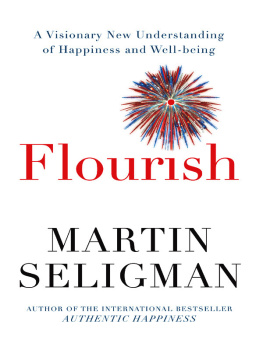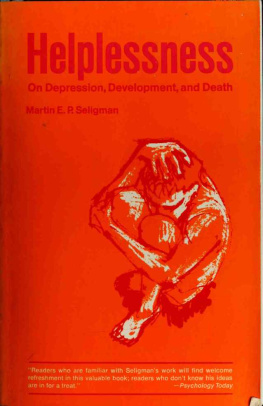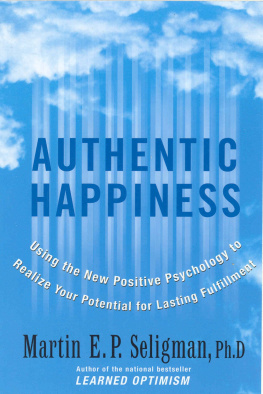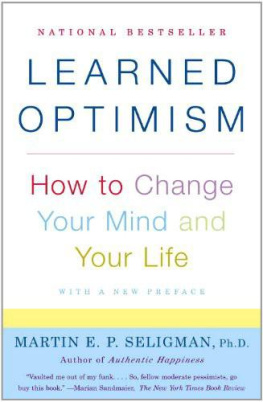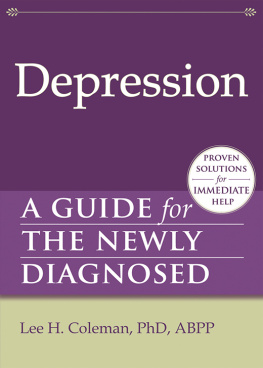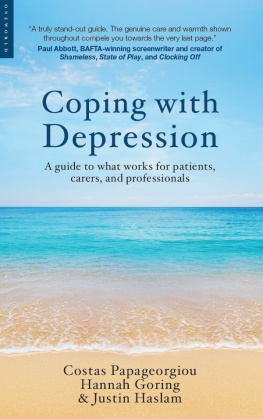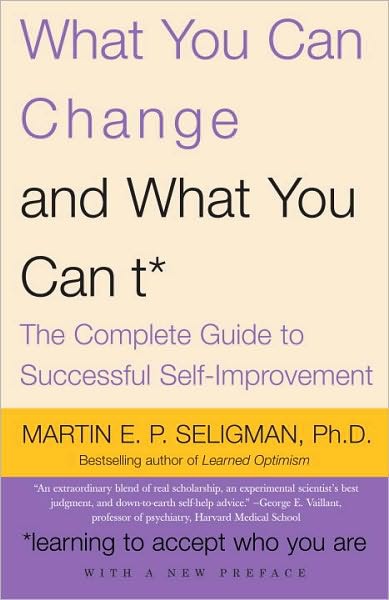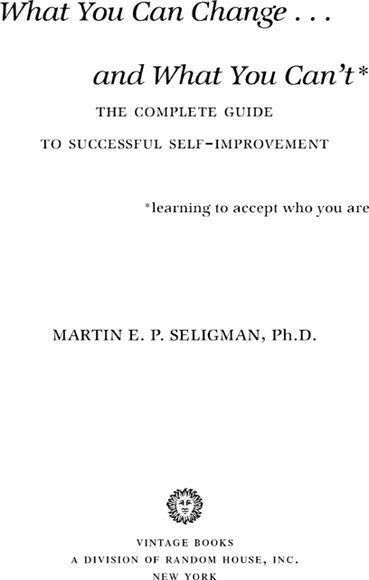MARTIN E. P. SELIGMAN, PH.D .
Martin E. P. Seligman, Ph.D., professor of psychology at the University of Pennsylvania and a past president of the American Psychological Association, is a leading expert on motivation and emotion and an authority on learned helplessness. He is the director of the Positive Psychology Center at the University of Pennsylvania. His many books include Authentic Happiness and Learned Optimism. Dr. Seligmans research has been supported by the National Institute on Mental Health, the National Institute of Aging, the National Science Foundation, the Department of Education, the MacArthur Foundation, the Templeton Foundation, and the Guggenheim Foundation.
ALSO BY MARTIN E. P. SELIGMAN, PH.D .
God, grant me serenity to accept the things I cannot change, courage to change the things I can, and wisdom to know the difference.
3.
10.
13.
15.
PREFACE TO THE VINTAGE EDITION
What You Can Change... and What You Cant was my attempt to review with unflinching candor the effectiveness of most of the different kinds of treatment for the major psychological disorders. As I survey the effectiveness of these treatments thirteen years later, I am somewhat surprised to find that most of the results remain the same, and the rest are not substantially different. But a pattern has become increasingly clear, and it is important for consumers to know about it. Because of the exigencies of financing and insurance, the psychological and biological treatments of patients confront ever more restricted budgets. In response, the professions of clinical psychology and psychiatry, as well as their research arms, have come to concentrate on firefighting rather than fire prevention. They focus almost entirely on crisis management and the rendering of cosmetic symptom relief, and they have all but given up on the notion of cure.
There are two kinds of medications, and similarly, there are two kinds of psychological interventions: curative and cosmetic. With medication, if you take an antibiotic and you take it long enough, it cures by killing the bacterial invaders. That is, when youre done taking it, the disease does not recrudesce. On the other hand, if you take quinine for malaria, you only get suppression of the symptoms. When you stop taking quinine, malaria returns. Quinine is a cosmetic drug, a palliative, and all medications can be classified either as curative in intention or cosmetic in intention. Palliation is a good thing (Im wearing a hearing aid right now.), but it is not the highest goal of interventions. Ideally, intervention is a way station to cure.
Yet every drug in the psycho-pharmacopoeia is cosmetic. There are no curative drugs, and biological psychiatry seems to have given up on the notion of cure. I am by no means a Freudian, but one thing that was exemplary about Freud was that he and his disciples sought cures. Freud wanted a psychotherapy that was like antibiotics, not a psychotherapy of cosmetics, and palliation is still not a significant goal in Freudian psychotherapy. But the decline of Freudian influence, as well as the stringencies of insurance plans, has shifted the focus of clinical psychology and psychiatry from cure to symptom relief.
This book examines just how good this symptom relief is when different drugs and psychotherapies are compared for different psychological problems. Roughly these treatments are about 65 percent effective. Depression, as you will read below, is typical. Consider two treatments that work, cognitive therapy versus SSRIs (e.g., Prozac). For each, you get roughly a 65 percent relief rate, along with a placebo effect that ranges from 45 percent to 55 percent. This means that the treatments net actual effect is between 10 and 20 percent. The more compelling the placebo, the higher the placebo percentage, and therefore the smaller the actual effect. These sobering numbers crop up over and over, whether youre looking at the percent of patients who experience relief or at the percent of their symptoms for which patients experience relief.
Why are the effects of almost all the drugs and psychotherapies only small to moderate? Why have therapists reached a 65 percent barrier?
From the first day I took up skiing until five years later when I quit, I was always fighting the mountain. Skiing was never easy. Every psychotherapeutic intervention is a fighting the mountain intervention. The treatments dont catch on and maintain themselves. In general, therapeutic techniques share the properties of being difficult to do and difficult to incorporate into ones life. In fact, the way researchers usually measure therapy effects is how long they last before they melt once treatment is discontinued.
Scientific ignorance, cost limitations, and the decline of Freudian psychotherapy may not be the only reasons for the 65 percent effect: Better treatments may always be elusive. In the therapeutic century that weve just lived through, it was the job of the therapist to minimize negative emotion: to dispense the drugs or the specific psychotherapy that would make people less anxious, less angry, or less depressed. But there is another approach to symptoms, older than the notion of therapy: learning to function well in the face of symptomsdealing with them.
Dealing with your symptoms is beginning to look more important again in light of the most important research finding in the field of personality of the last quarter of the twentieth century: that most personality traits are highly heritable. Symptoms often, but not always, stem from personality traits. As such, I believe that they are modifiable, but only within limits. How do we address the likelihood that most psychological symptoms stem from heritable personality traits that can be ameliorated but not wholly eliminated?
Do you know how snipers and fighter pilots are trained? (Im not endorsing sniping by the way; I only describe how training is done.) It takes about twenty-four hours for a sniper to get into position, and then it can take another thirty-six hours to get the shot off. Now that means that typically before a sniper shoots, he has not slept for two or more days. Hes extremely tired. Now, lets say the military went to a psychotherapist or a biological psychiatrist and asked how she would train a sniper? She undoubtedly would use drugs or psychological interventions to break up the snipers fatigue.
Thats not how snipers are trained, however. One trains a sniper by having him practice shooting when he is extremely tired. That is, one teaches snipers to


